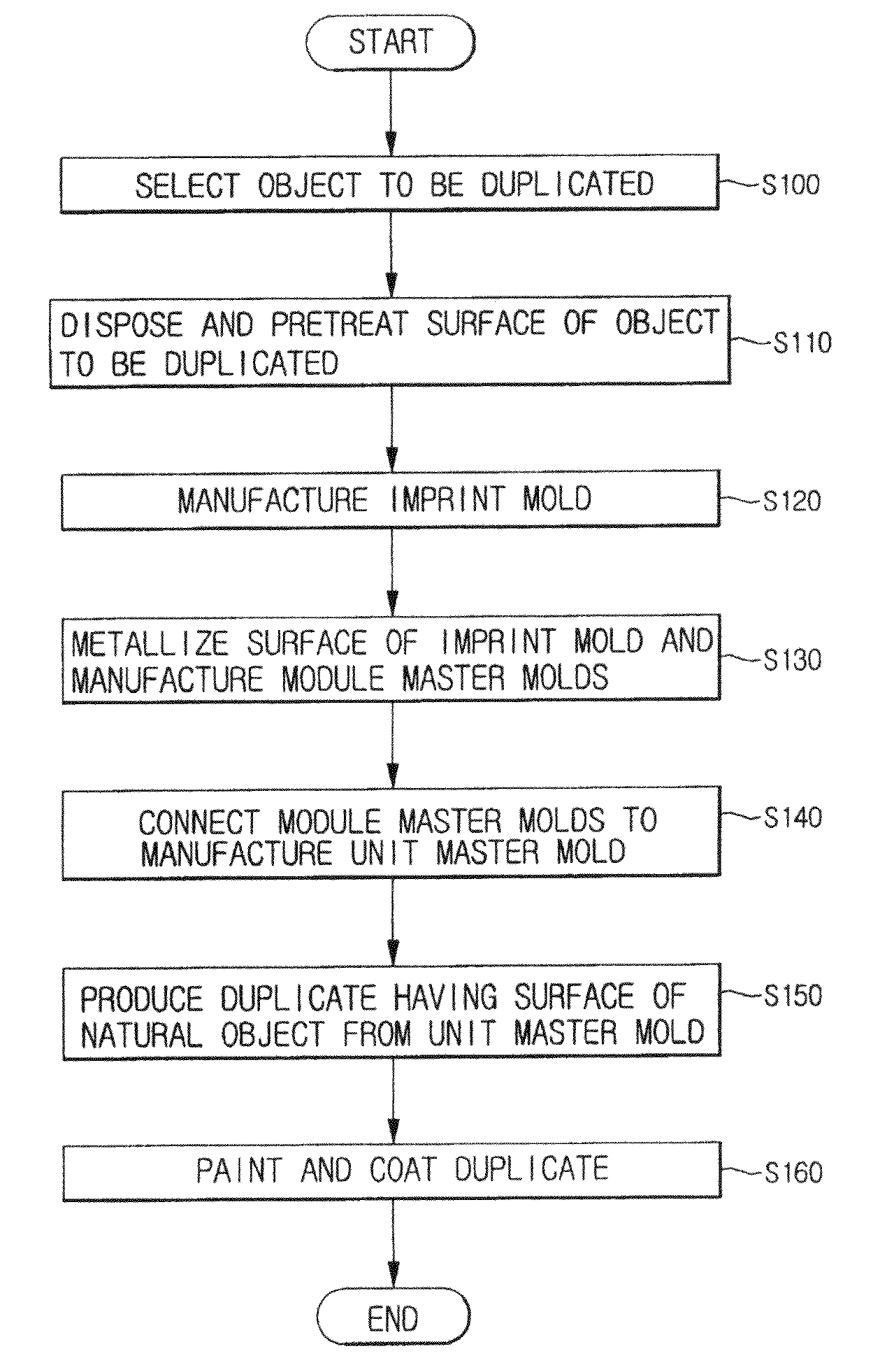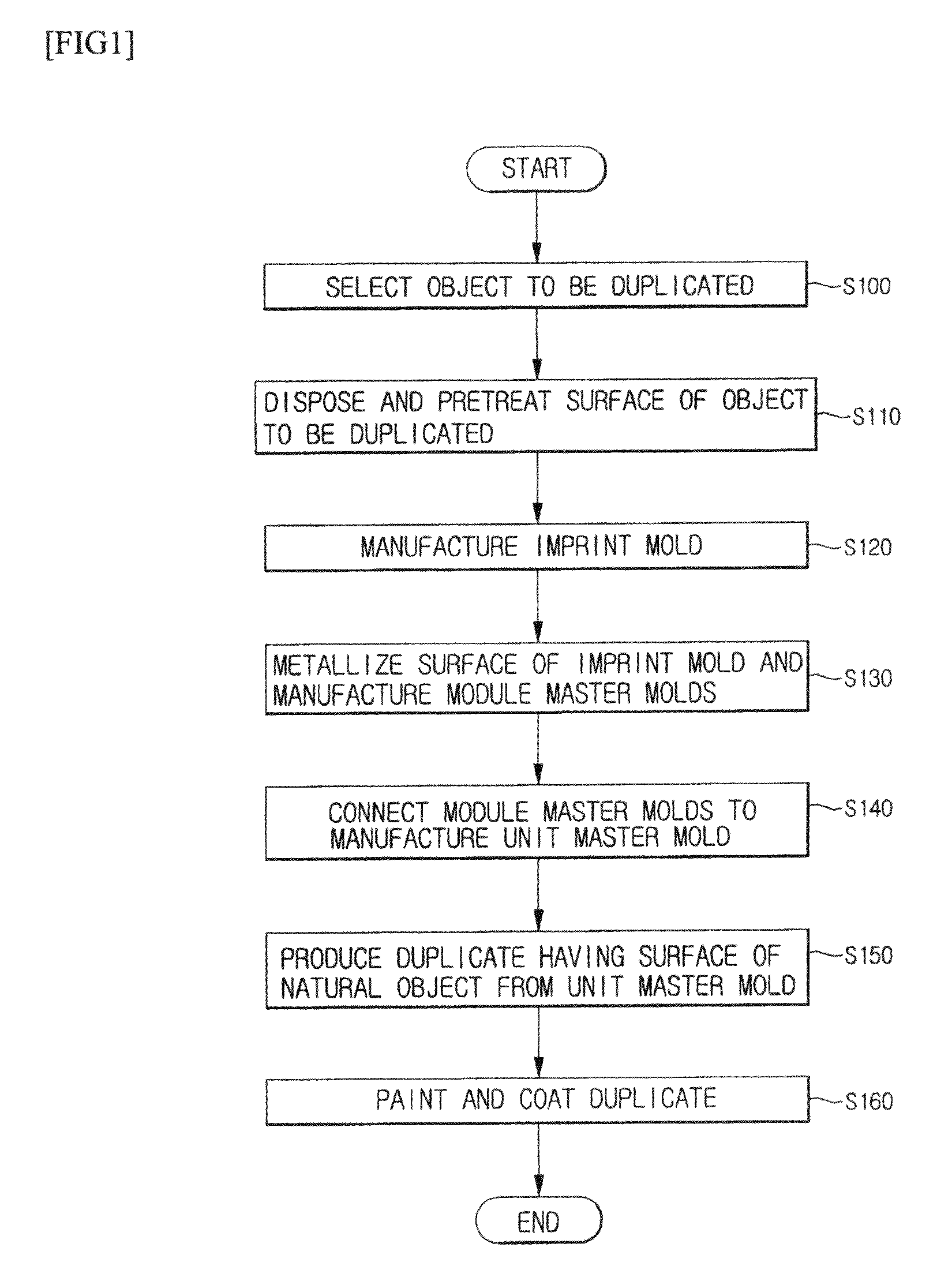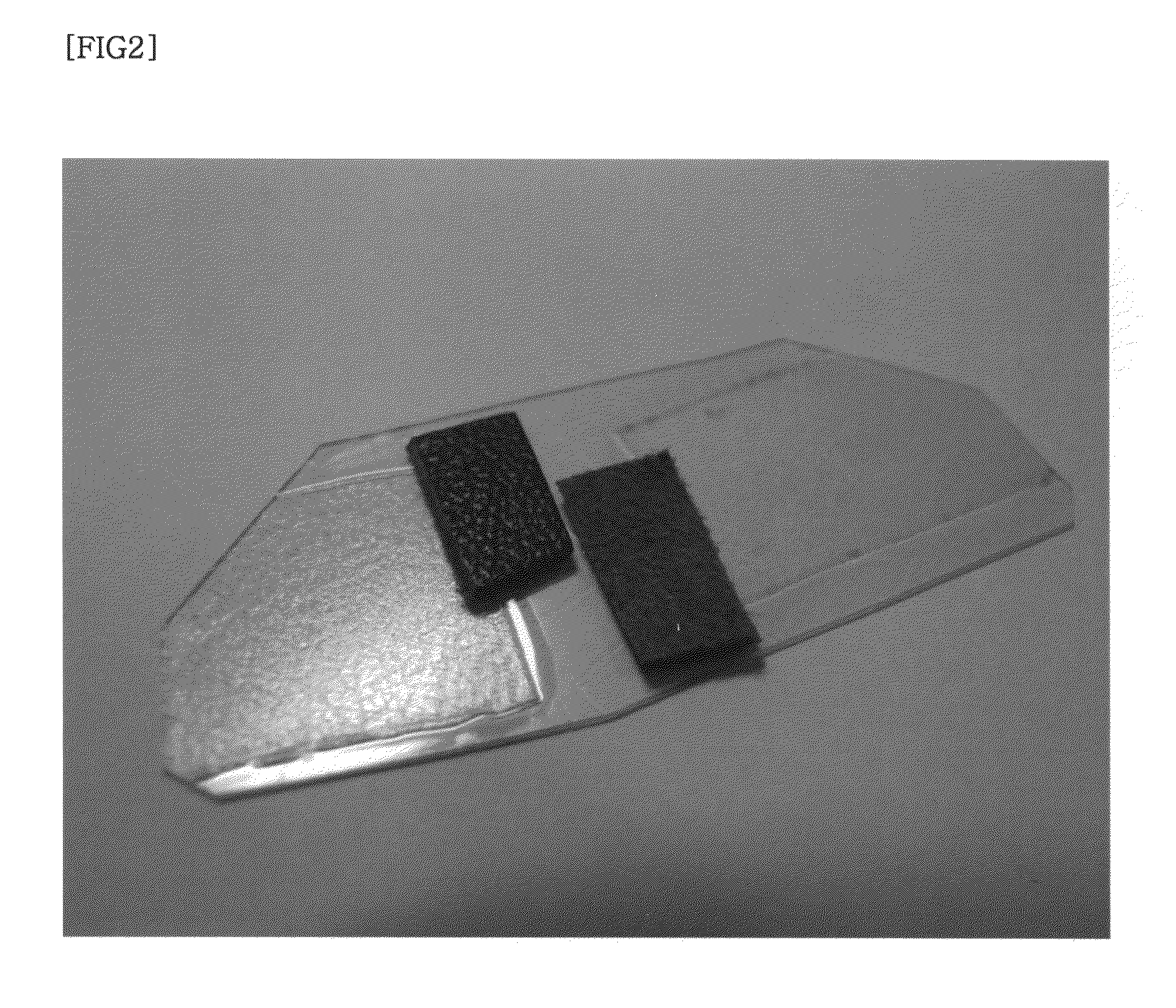Method of duplicating nano pattern texture on object's surface by nano imprinting and electroforming
a nano pattern and texture technology, applied in the field of nano pattern duplication of the surface of objects, can solve the problems of inability to realize the surface texture on the nanometer scale, unsuitable mass production, and difficult mold manufacturing for such duplication, and achieve the effect of convenient industrial use, beautiful and soft texture, and structure and color
- Summary
- Abstract
- Description
- Claims
- Application Information
AI Technical Summary
Benefits of technology
Problems solved by technology
Method used
Image
Examples
Embodiment Construction
[0021]Hereinafter, a detailed description will be given of a method of duplicating the nano-pattern of the surface of an object using electroforming according to the present invention, with reference to the accompanying drawings.
[0022]In the present invention, FIG. 1 is a flowchart sequentially illustrating the process of duplicating the nano-pattern of the surface of an object according to the present invention, FIG. 2 is a photograph illustrating a plastic mold which is nano-imprinted with the surface of natural leather according to an embodiment of the present invention, FIG. 3 is a photograph, magnified 2×, of the front surface of natural leather to be molded through nano-imprinting according to the embodiment of the present invention, FIG. 4 is a photograph, magnified 2×, of the mold which is nano-imprinted with the front surface of natural leather according to the embodiment of the present invention, FIG. 5 is a photograph, magnified 2×, of the back surface of natural leather ...
PUM
| Property | Measurement | Unit |
|---|---|---|
| thick | aaaaa | aaaaa |
| surface texture | aaaaa | aaaaa |
| area | aaaaa | aaaaa |
Abstract
Description
Claims
Application Information
 Login to View More
Login to View More - R&D
- Intellectual Property
- Life Sciences
- Materials
- Tech Scout
- Unparalleled Data Quality
- Higher Quality Content
- 60% Fewer Hallucinations
Browse by: Latest US Patents, China's latest patents, Technical Efficacy Thesaurus, Application Domain, Technology Topic, Popular Technical Reports.
© 2025 PatSnap. All rights reserved.Legal|Privacy policy|Modern Slavery Act Transparency Statement|Sitemap|About US| Contact US: help@patsnap.com



